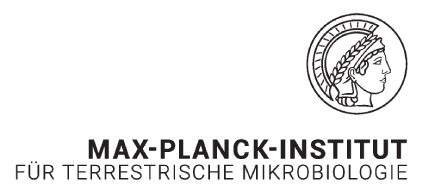08.08.2023 Methane formation before the emergence of life
Researchers show how methane formed in early Earth's aquatic environments and is still released today

A team at the Max Planck Institute for Terrestrial Microbiology in Marburg has found that iron and reactive oxygen species drive the formation of methane in aqueous environments. In Earth's early history, this non-enzymatic process probably favored the emergence of life. Today, this mechanism could still contribute to methane production.
Find out more on the MPI website. Link to the article
Ein Team am Max-Planck-Institut für terrestrische Mikrobiologie in Marburg wies nach, dass Eisen und reaktive Sauerstoffspezies die Bildung von Methan in wässrigen Umgebungen antreiben. In der Frühgeschichte der Erde begünstigte dieser rein chemische Vorgang vermutlich die Entstehung des Lebens. Zudem könnte er auch heute noch zu Methanemissionen beitragen.
Lesen Sie mehr auf der MPI Webseite. Link zum deutschsprachigen Artikel


